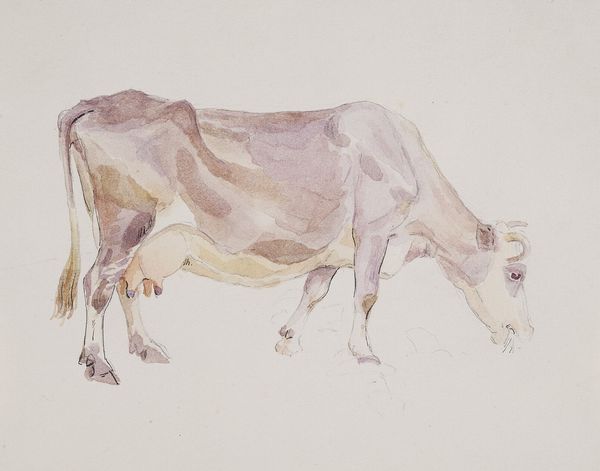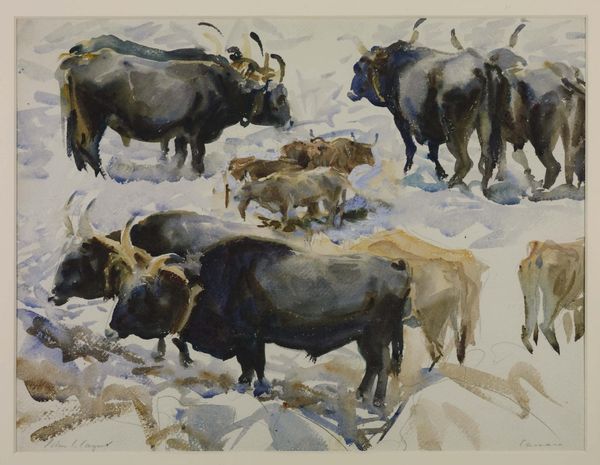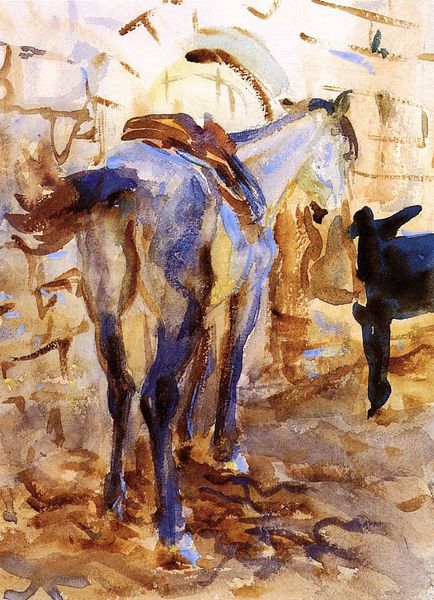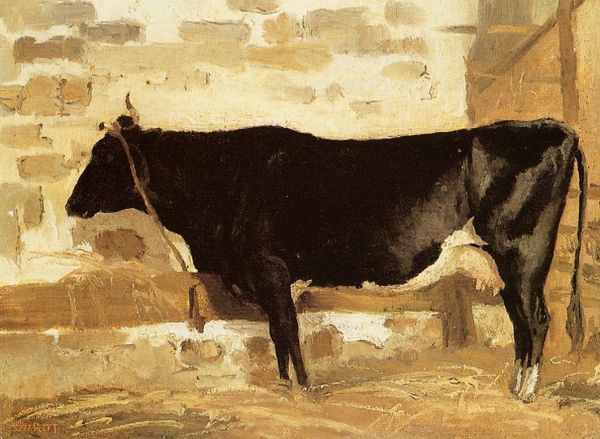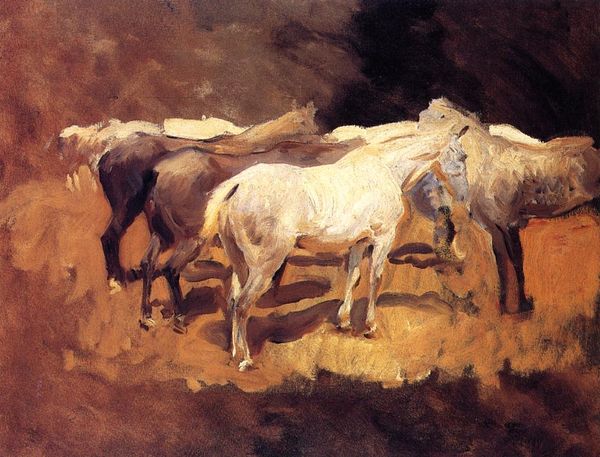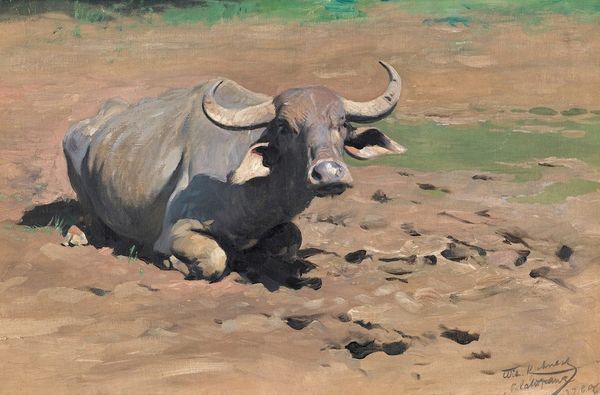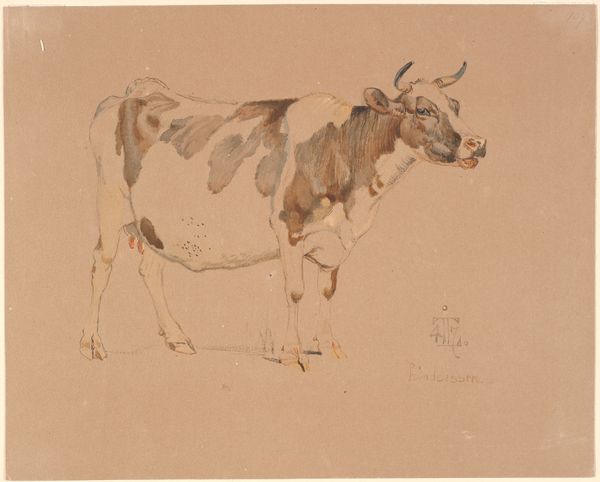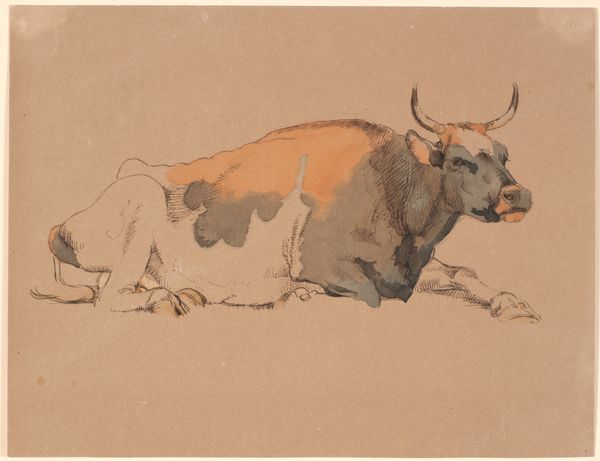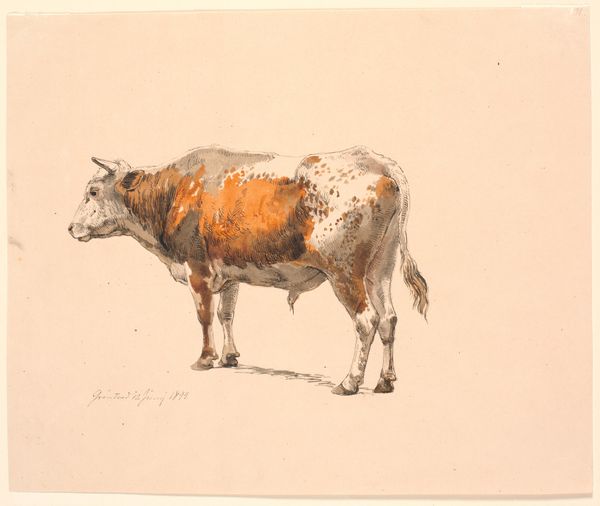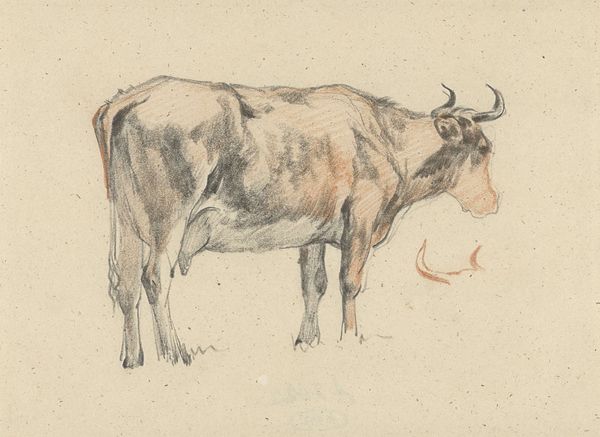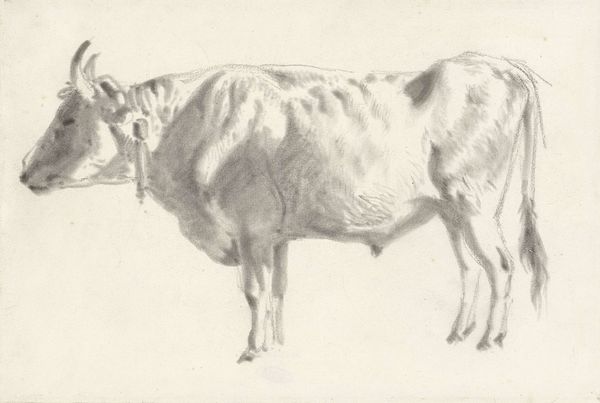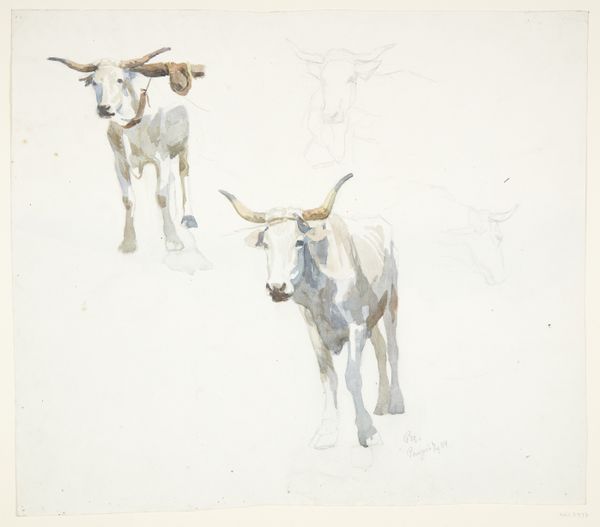
#
abstract painting
#
animal
#
impressionist landscape
#
possibly oil pastel
#
oil painting
#
fluid art
#
neo expressionist
#
acrylic on canvas
#
painting painterly
#
animal drawing portrait
#
expressionist
Dimensions: 34.29 x 49.53 cm
Copyright: Public domain
Curator: We're looking at "White Ox at Siena" created by John Singer Sargent in 1910. It is held in a private collection. Editor: There’s something almost spectral about the animal, like it’s emerging from the earth itself. The palette is soft, dominated by washes of pale yellows, blues, and browns that seem to dissolve into each other. Curator: Absolutely, Sargent’s loose brushwork evokes a sense of fleeting observation. While known for portraiture, he frequently turned to landscapes and animal studies later in life. "White Ox at Siena" showcases his virtuosity with watercolor, capturing a moment of rural Italian life. Editor: Rural life, though tinged with the looming pressures of modernity. Oxen have historically been beasts of burden, representing the subjugation of the natural world to human demands. Does Sargent critique this relationship or simply aestheticize it? The perspective feels interesting… It's low, as if positioning the viewer in a position of humility, or perhaps to communicate their sheer size and imposing physicality, with horns reaching like antennas towards the sky. Curator: Sargent was certainly aware of social shifts. Consider the political climate of the time: the rise of industrialization and the questioning of traditional hierarchies were ubiquitous concerns across Europe. Editor: Yes, and in Italy particularly there were intense regional disparities and struggles between agricultural traditions and calls for industrial progress. Placing such an emphasis on a working animal feels like an assertion of traditional identities amidst turbulent times. I mean, it would be great to contextualize this with other similar art from the time! Are there social dimensions and class dimensions in this, even unspoken or unintentionally encoded by the artist. I bet! Curator: One could also see it as part of the artist's broader interest in portraying various cultures and environments, documenting his travels through paint. His travels with fellow wealthy elites afforded these documents, but their consumption remained mostly inside similar classes. So this act of translation from countryside into metropolitan circles certainly reflects, perhaps unintentionally, socioeconomic status. Editor: Indeed. I think either reading offers valuable insight, so there really is no singular 'right' way to contextualize this artwork, particularly across ever changing landscapes of values, socio-cultural shifts, etc. Curator: Precisely. Art lives, changes, and evolves as the cultural context evolves, so this allows for us to be ever more expansive and reflexive.
Comments
No comments
Be the first to comment and join the conversation on the ultimate creative platform.
